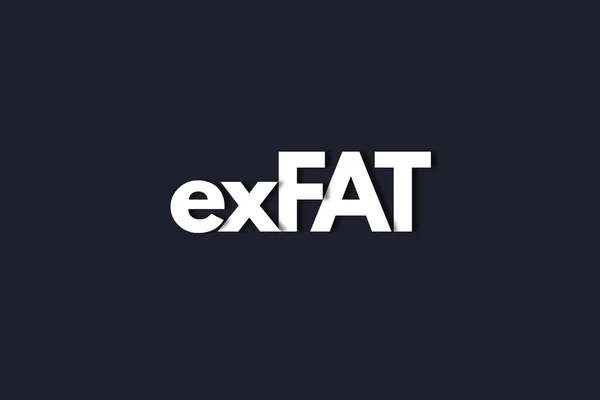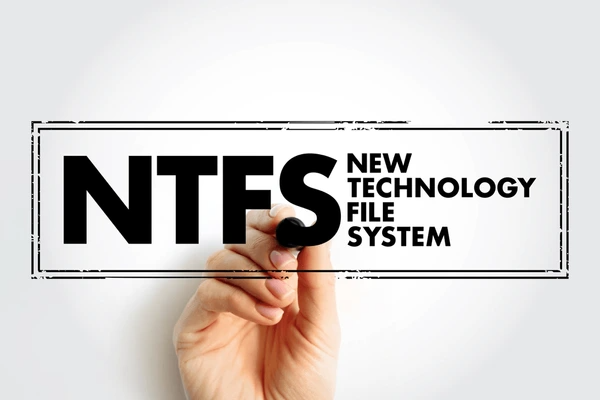
Introduction: What Are exFAT, FAT32, and NTFS?
exFAT vs FAT32 vs NTFS: They are file systems that determine how data is stored and managed on drives. Each offers unique advantages in compatibility, performance, and features, making them suitable for different storage needs.
exFAT (Extended File Allocation Table)
- Developed by Microsoft to overcome limitations of FAT32 like maximum file size
- Designed for flash memory devices like USB drives and memory cards
- Supports very large files (>4GB) and partitions (>32GB)
- Manages data in clusters, with minimum cluster size of 4KB
- Efficient for flash media but can also be used on hard disks in Windows XP and later

FAT32 (File Allocation Table 32)
- An older file system introduced in Windows 95 to replace FAT16
- Maximum single file size of 4GB and partition size of 2TB
- Simple data structure with good compatibility across operating systems
- Commonly used for removable media like USB drives due to limitations
- Does not support advanced features like permissions and encryption

NTFS (New Technology File System)
- Better suited for hard disks than flash memory due to higher overhead
- The primary file system for modern Windows versions
- Supports large files, partitions, and advanced features like compression and encryption
- Maintains detailed metadata and journaling for reliability
- Provides access control, auditing, and security features lacking in FAT systems

Comparison Table: exFAT vs FAT32 vs NTFS
| Feature | FAT32 | exFAT | NTFS |
|---|---|---|---|
| File Size Limit | 4GB | Virtually unlimited | Virtually unlimited |
| Partition Size Limit | 8TB | 128PB | Practically unlimited |
| Compatibility | Universal | Modern OS (Windows/macOS) | Limited (requires drivers) |
| Features | Basic | Basic | Advanced |
| Best Use Case | USB drives, small storage | Flash drives, external HDDs | Internal drives |
Use Cases for Each File System
exFAT File System
- Large Storage Devices: exFAT is the preferred file system for large storage devices like external hard drives, USB flash drives, and memory cards over 32GB. It supports maximum single file sizes up to 16 exabytes (16 million terabytes), making it ideal for storing and transferring large multimedia files.
- Cross-Platform Compatibility: exFAT is supported by most modern operating systems, including Windows, macOS, Linux, and Android, allowing seamless data exchange across different platforms. This makes it suitable for portable storage devices used with multiple systems.
- Embedded Systems: exFAT is recommended for embedded systems and consumer electronics devices like digital cameras, media players, and gaming consoles due to its simplicity and low overhead compared to NTFS.
FAT32 File System
- Legacy Compatibility: FAT32 is widely compatible with older operating systems and devices, making it a suitable choice for data exchange between legacy systems and modern platforms.
- Removable Media: FAT32 is commonly used for formatting removable media like USB flash drives, memory cards, and external hard drives due to its widespread compatibility and simplicity.
- Embedded Systems: Like exFAT, FAT32 is also used in some embedded systems and consumer electronics devices due to its simplicity and low overhead. However, its maximum single file size limit of 4GB can be a limitation in certain scenarios.
NTFS File System
- Advanced Features: NTFS offers advanced features like file compression, encryption, access control lists (ACLs), and journaling, making it suitable for secure and robust data storage on modern Windows systems.
- Large Volumes: NTFS is the preferred file system for large hard disk volumes, especially on Windows servers and workstations, as it can handle volumes up to 16 exabytes with efficient disk space utilization.
- System Drives: NTFS is the default file system for system drives on modern Windows installations, providing features like file system metadata recovery and system repair capabilities.
- Data Recovery: NTFS’s journaling and file system metadata structures facilitate better data recovery capabilities compared to FAT32 in case of system failures or disk corruption.
Conclusion: Choosing Between exFAT, FAT32, and NTFS
When comparing exFAT, FAT32, and NTFS, the best choice depends on your use case:
- FAT32 for legacy devices and universal compatibility.
- exFAT for large external drives and cross-platform use.
- NTFS for advanced features and internal drives.
Evaluate your needs to select the ideal file system for your storage solution.
FAQs
- Which file system is best for a USB drive?
Use exFAT for large files and modern compatibility. Choose FAT32 for small drives and legacy device support. - Can macOS write to NTFS?
By default, macOS can only read NTFS. Third-party tools like Paragon NTFS allow write support. - Is exFAT better than FAT32?
Yes, exFAT is better for modern devices, as it supports larger files and partitions. - How do I choose between exFAT and NTFS for external drives?
Choose exFAT for cross-platform use (Windows and macOS) and NTFS for advanced features in Windows-only environments. - Can I convert FAT32 to NTFS without losing data?
Yes, Windows provides a built-in conversion tool using the command:
`convert [drive letter]: /fs:ntfs`
To get detailed scientific explanations of exFAT vs. FAT32 vs. NTFS, try Patsnap Eureka.

